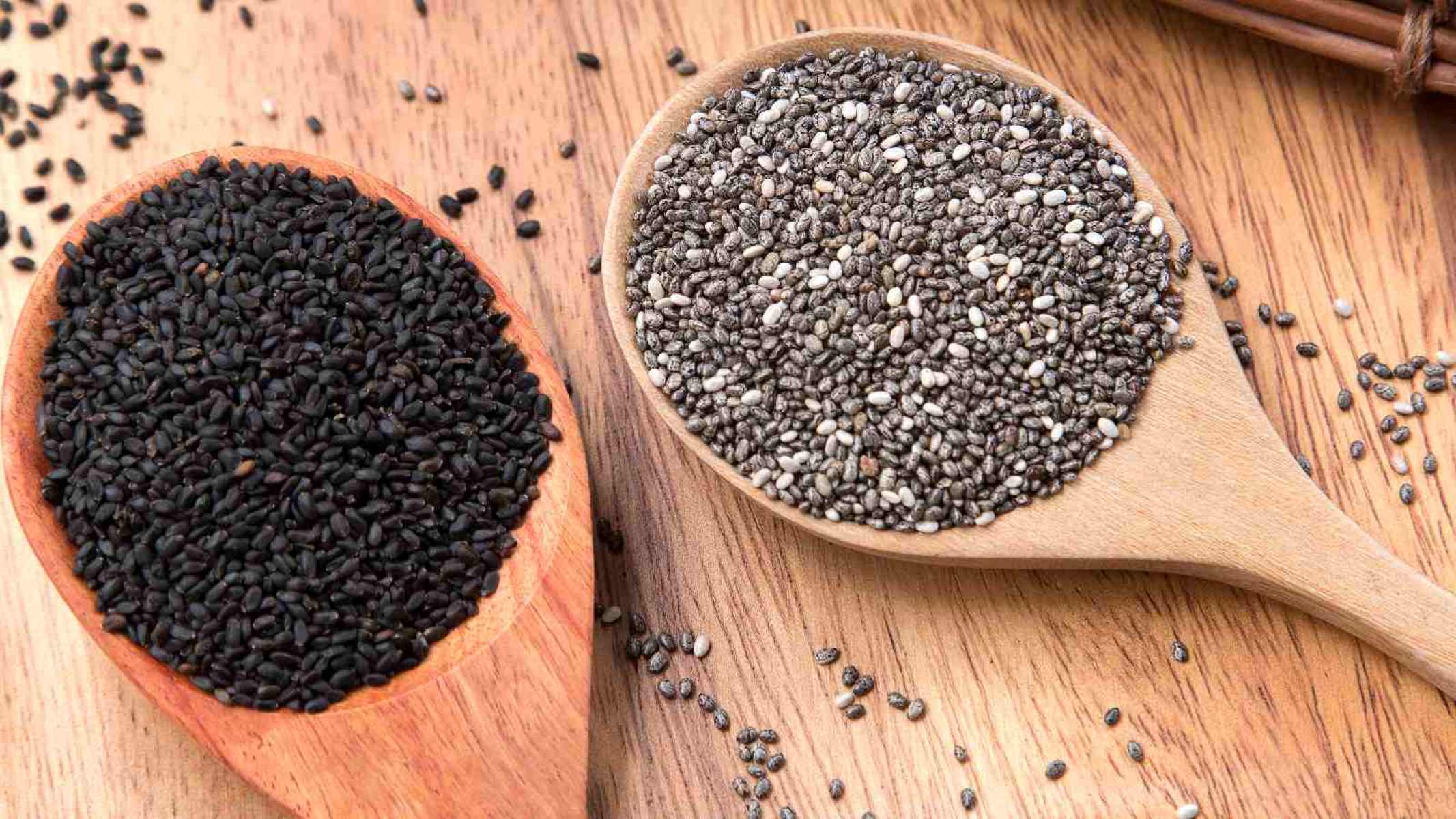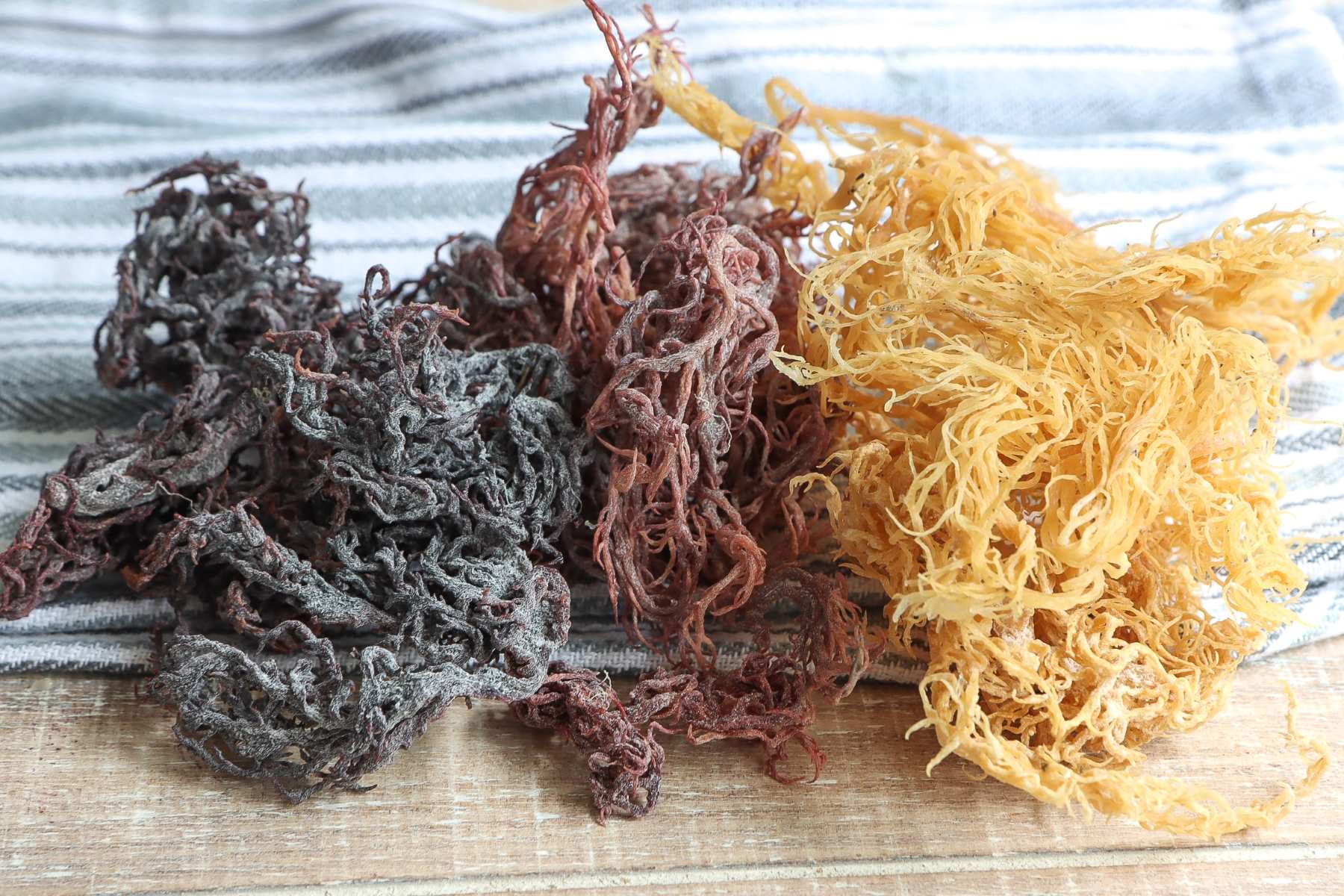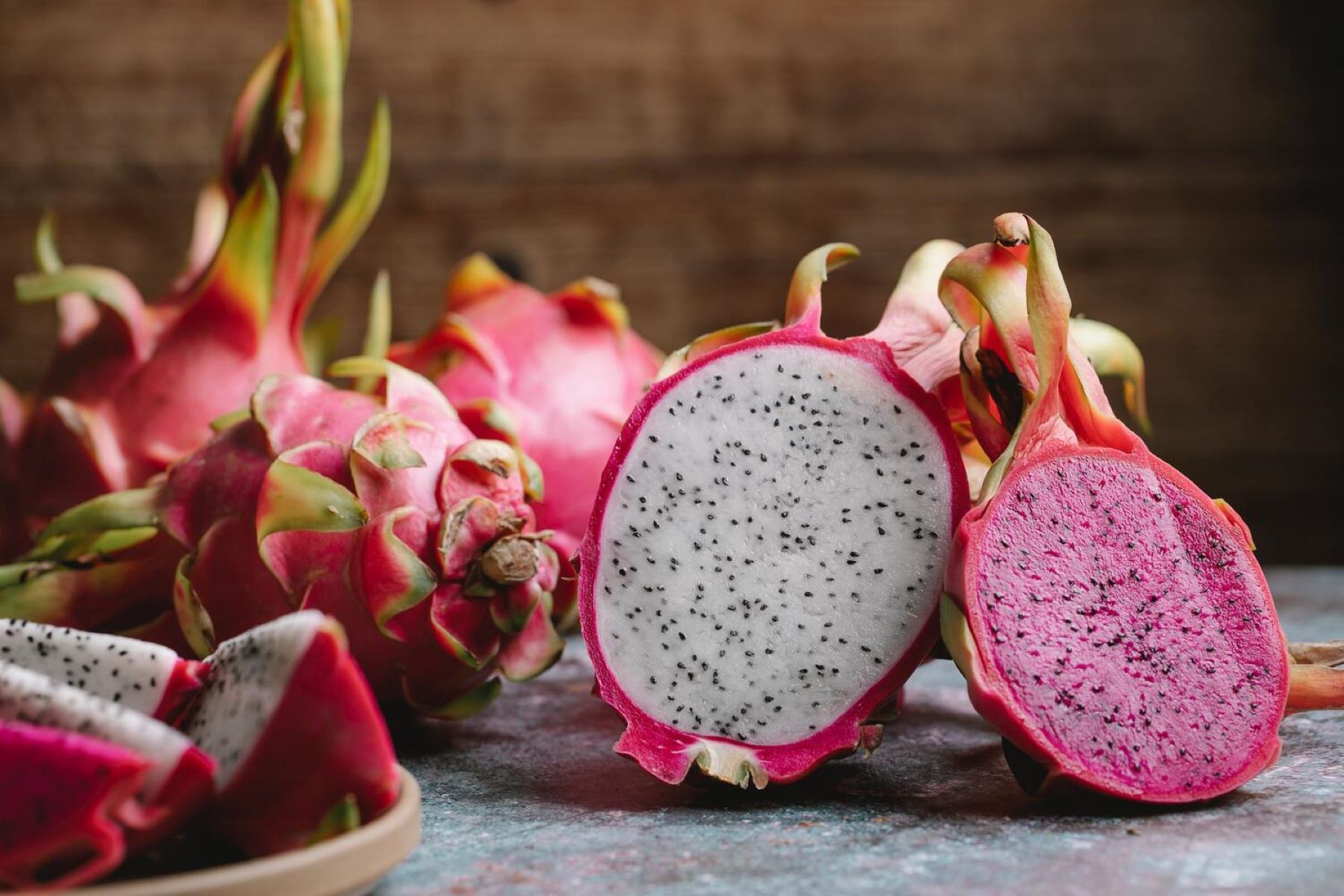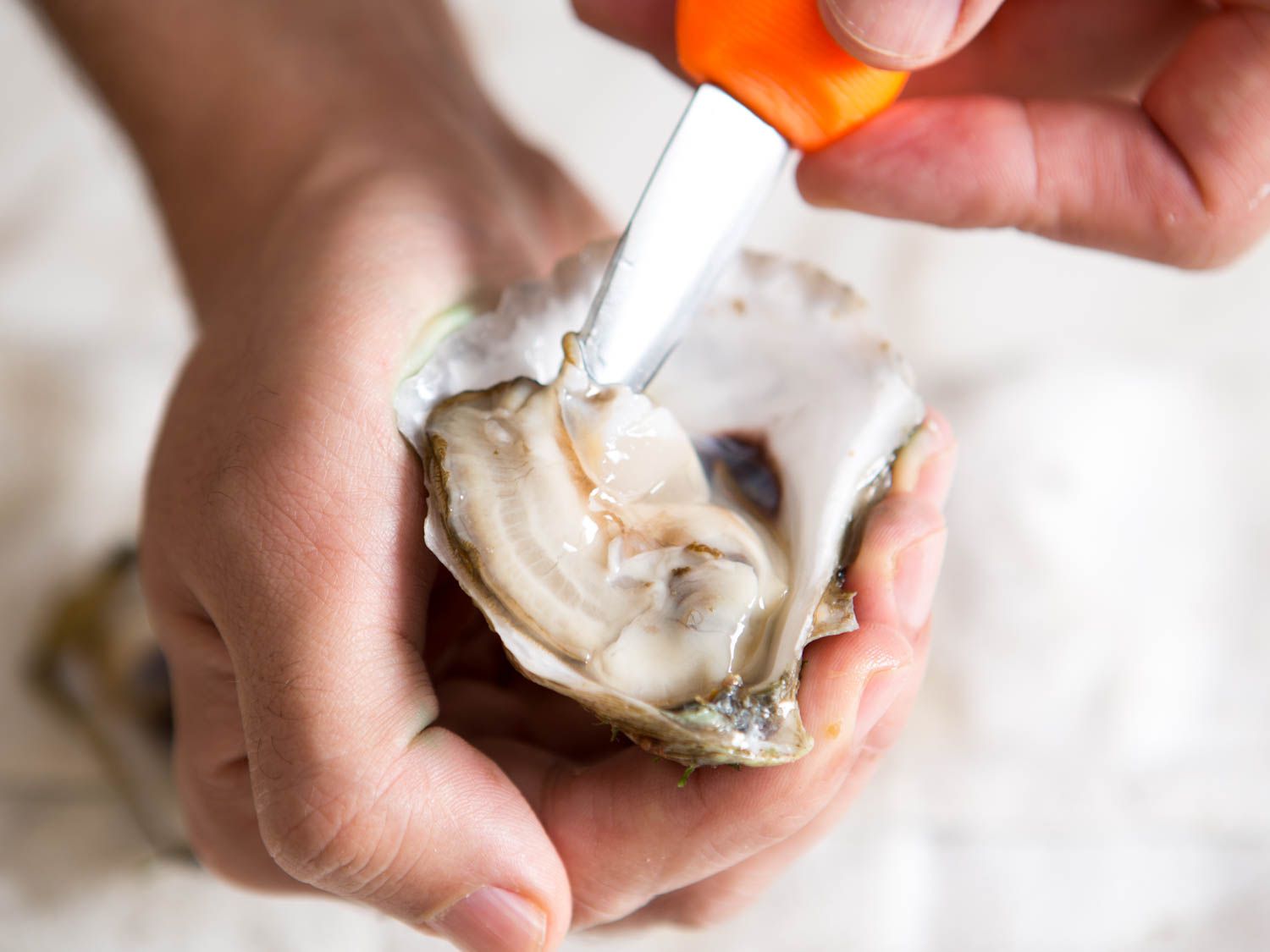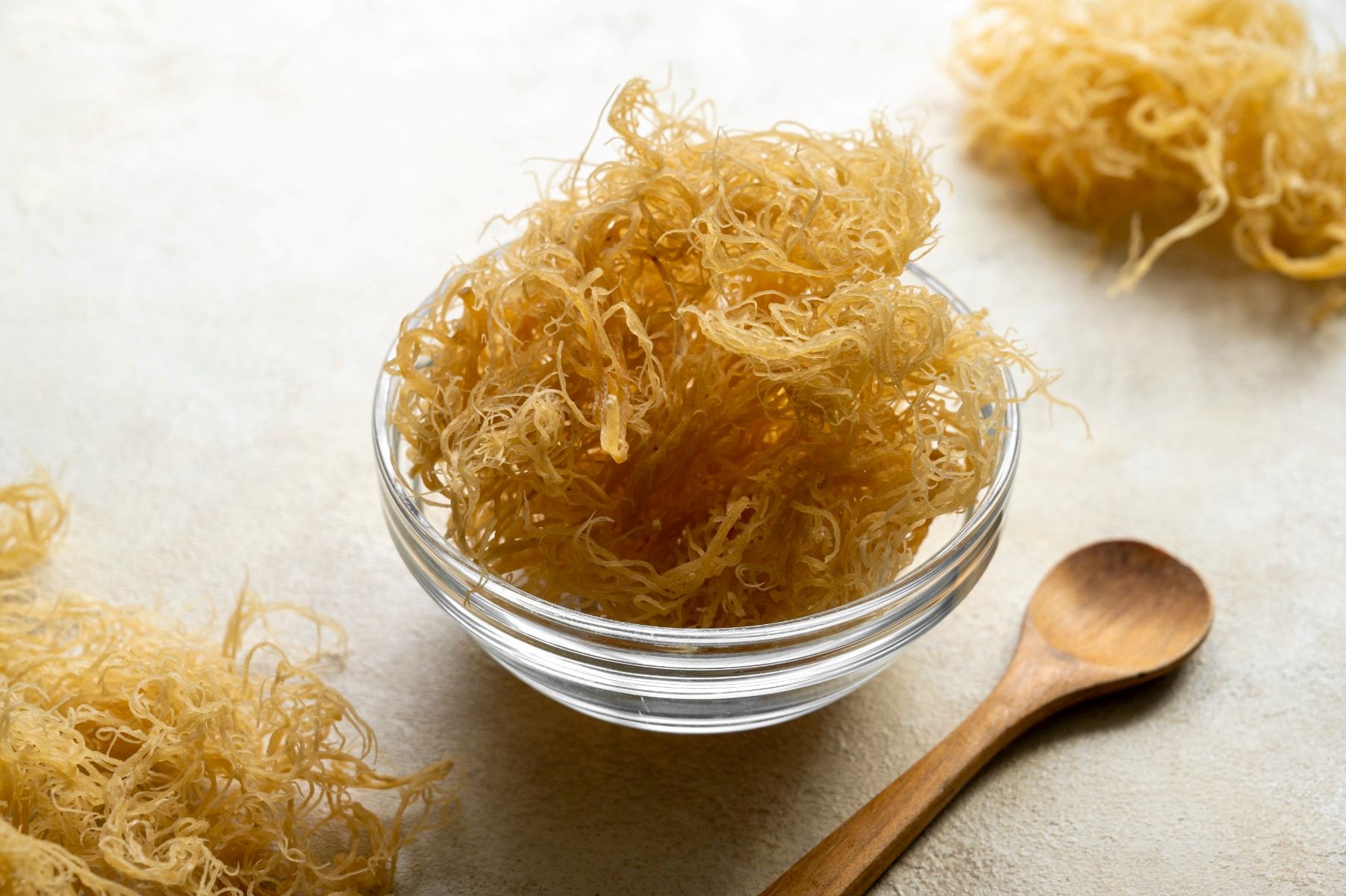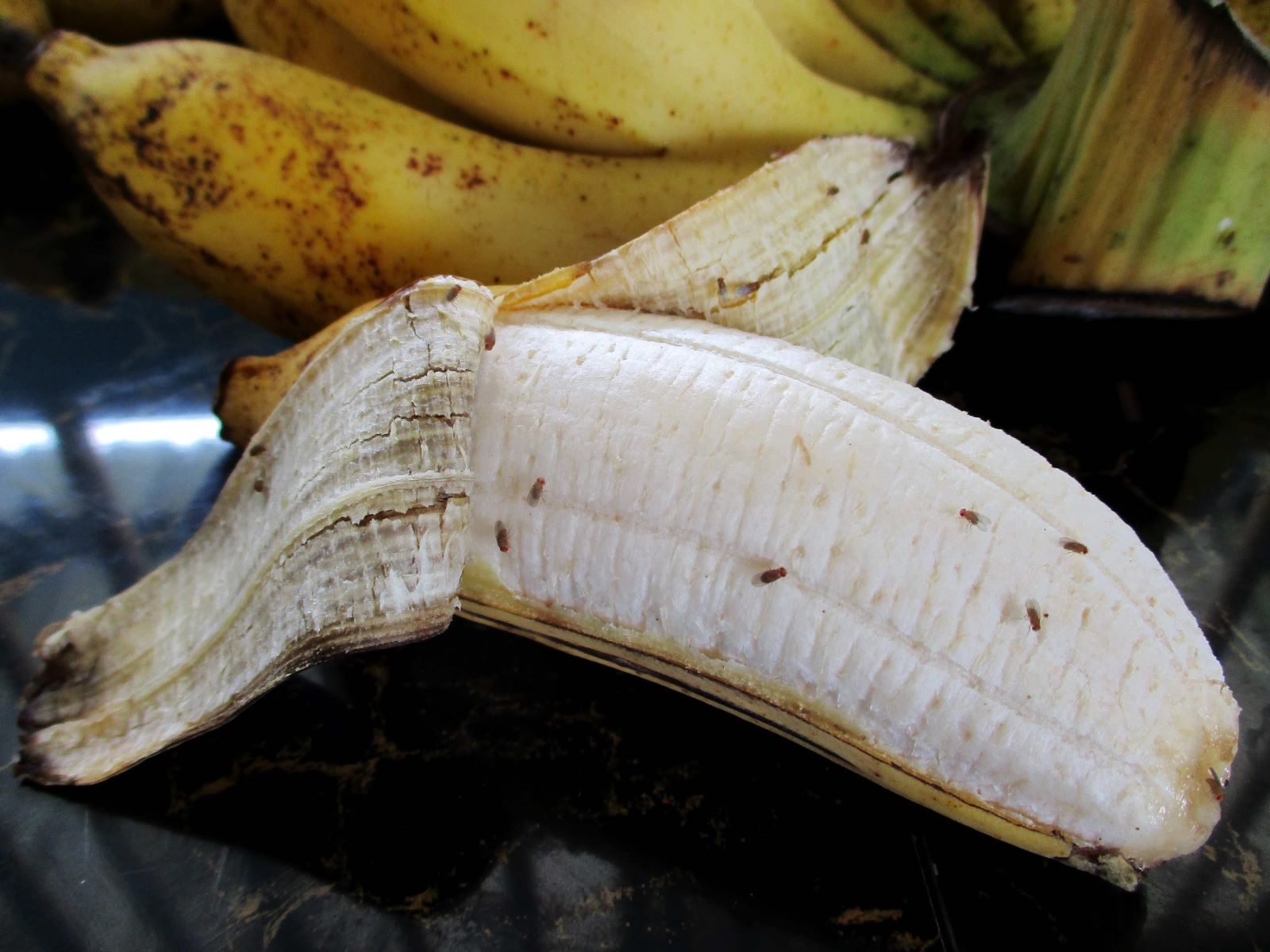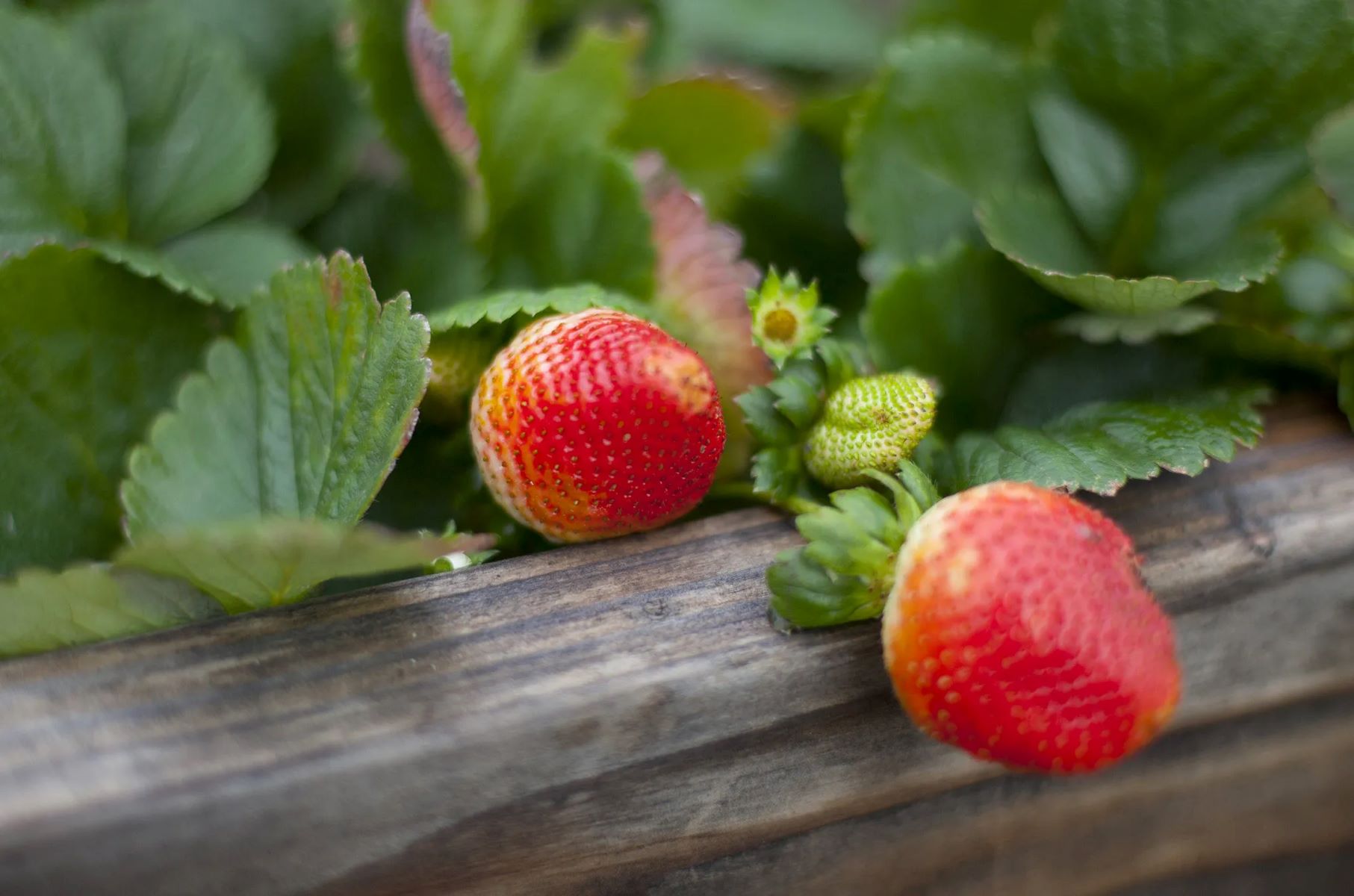Home>Food and Cooking>How To Dry Fresh Basil
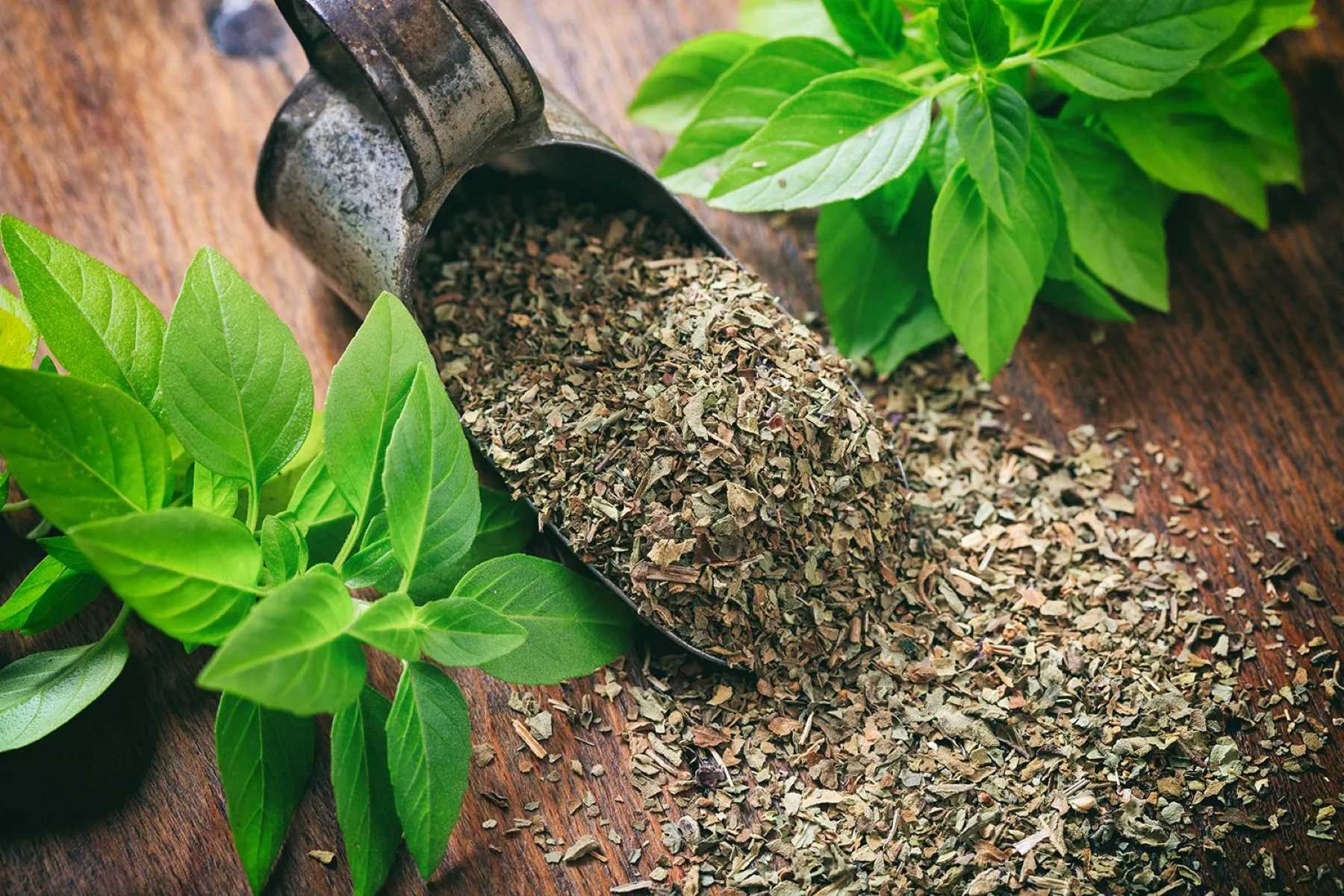

Food and Cooking
How To Dry Fresh Basil
Published: February 29, 2024
Learn the best methods for drying fresh basil at home. Discover tips and techniques for preserving the flavor and aroma of this popular herb. Perfect for food and cooking enthusiasts!
(Many of the links in this article redirect to a specific reviewed product. Your purchase of these products through affiliate links helps to generate commission for Regretless.com, at no extra cost. Learn more)
Table of Contents
Introduction
Fresh basil is a versatile herb that adds a burst of flavor and aroma to a wide range of dishes, from pasta and salads to soups and sauces. However, when you have an abundance of fresh basil on hand, drying it can be a great way to preserve its vibrant flavor for future use. Whether you have a bountiful basil plant in your garden or have purchased a large bunch from the market, learning how to dry fresh basil is a valuable skill for any home cook.
Drying basil not only extends its shelf life but also allows you to enjoy the delightful taste of this herb all year round. By following the proper techniques for harvesting, washing, and drying basil leaves, you can ensure that the dried basil retains its essential oils and intense flavor. Whether you choose to air dry basil or use a dehydrator, the process is relatively simple and requires minimal equipment.
In this comprehensive guide, we will walk you through the step-by-step process of drying fresh basil, from harvesting the leaves to storing the dried herb. By the end of this article, you will have the knowledge and confidence to preserve your basil harvest or store store-bought basil for future culinary adventures. So, let's embark on this aromatic journey and explore the art of drying fresh basil!
Step 1: Harvesting Fresh Basil
Harvesting fresh basil is the first crucial step in the process of drying this aromatic herb. Whether you have a basil plant in your garden or have purchased a bunch of basil from the store, proper harvesting ensures that you gather the leaves at their peak flavor and fragrance. Here's how to harvest fresh basil for drying:
-
Choose the Right Time: The best time to harvest basil is in the morning when the essential oils are at their peak concentration. This is when the leaves are most flavorful and aromatic.
-
Select Healthy Leaves: Look for vibrant, healthy leaves that are free from blemishes or discoloration. Avoid harvesting any leaves that show signs of damage or disease.
-
Use Pruning Shears or Scissors: To harvest the basil leaves, use clean pruning shears or sharp scissors to snip the stems just above a pair of leaves. This method encourages the plant to produce new growth and ensures that the remaining plant continues to thrive.
-
Harvest Strategically: When harvesting basil, focus on removing the larger, outer leaves first, as they tend to have the most robust flavor. Leave the smaller, inner leaves to continue growing and developing.
-
Avoid Overharvesting: It's important not to strip the plant of all its leaves at once, as this can weaken the basil plant. Instead, aim to harvest no more than one-third of the plant at a time, allowing it to replenish its foliage for future harvests.
By following these steps, you can gather fresh basil leaves in a way that promotes the health and vitality of the plant while ensuring that you have an ample supply for drying. With the freshly harvested basil in hand, you're now ready to move on to the next steps of washing and drying the leaves to preserve their delightful flavor and fragrance.
Step 2: Washing and Drying Basil Leaves
After harvesting fresh basil, the next crucial step is to wash and dry the leaves thoroughly. Properly cleaning the basil leaves removes any dirt, insects, or residue that may be present, ensuring that the dried basil is clean and safe for consumption. Here's a detailed guide on how to wash and dry basil leaves effectively:
Washing Basil Leaves
-
Gentle Rinse: Begin by gently rinsing the harvested basil leaves under cool running water. This helps remove any surface debris and dirt from the leaves. Be careful not to use high water pressure, as basil leaves are delicate and can bruise easily.
-
Inspect for Debris: While rinsing, inspect the leaves carefully to ensure that all dirt, insects, or other foreign particles are washed away. If you notice any damaged or discolored leaves, set them aside for immediate use rather than drying them.
-
Pat Dry with Paper Towels: Once the leaves have been rinsed, gently pat them dry with paper towels. Avoid rubbing the leaves vigorously, as this can cause bruising and damage the delicate structures of the leaves.
Drying Basil Leaves
-
Air Drying: One of the most traditional methods for drying basil leaves is air drying. To air dry basil, lay the washed and dried leaves in a single layer on a clean kitchen towel or paper towels. Place them in a well-ventilated area away from direct sunlight. Allow the leaves to air dry for 3-4 days, or until they are completely dry and brittle to the touch.
-
Using a Salad Spinner: If you prefer a quicker method, consider using a salad spinner to remove excess moisture from the basil leaves after washing. Simply place the leaves in the salad spinner basket, give them a gentle spin, and then pat them dry with paper towels before proceeding with the drying process.
-
Dehydrator Option: Another efficient way to dry basil leaves is by using a food dehydrator. Arrange the washed and dried basil leaves in a single layer on the dehydrator trays, ensuring that there is ample space between the leaves for proper air circulation. Set the dehydrator to a low temperature, typically around 95°F (35°C), and allow the leaves to dry for 24-48 hours, or until they are thoroughly dehydrated.
By following these steps for washing and drying basil leaves, you can ensure that the dried basil retains its vibrant color, intense flavor, and aromatic qualities. Once the basil leaves are completely dry, you can proceed to the next step of storing the dried herb for future use.
Read more: How To Store Fresh Parsley
Step 3: Air Drying Basil
Air drying is one of the oldest and most traditional methods for preserving fresh herbs, including basil. This gentle and time-honored approach allows the basil leaves to slowly dehydrate, retaining their essential oils, flavor, and vibrant green color. Air drying basil is a simple and effective way to prepare the herb for long-term storage, ensuring that you have a supply of dried basil to enhance your culinary creations throughout the year.
To air dry basil, begin by washing and thoroughly drying the freshly harvested leaves, as outlined in the previous step. Once the basil leaves are clean and free from excess moisture, it's time to arrange them for air drying. Here's a step-by-step guide to air drying basil effectively:
-
Preparation: Lay a clean kitchen towel or several layers of paper towels on a flat surface. Ensure that the surface is clean and free from any contaminants that could affect the quality of the drying basil.
-
Arranging the Leaves: Gently spread the washed and dried basil leaves in a single layer on the prepared surface. Avoid overcrowding the leaves, as ample air circulation is essential for the drying process.
-
Choosing the Drying Location: Select a well-ventilated area for drying the basil. It's important to choose a spot that is away from direct sunlight, as prolonged exposure to sunlight can cause the basil leaves to lose their essential oils and vibrant color. A cool, dry, and airy location, such as a countertop or a clean, dry room, is ideal for air drying basil.
-
Patience: Allow the basil leaves to air dry undisturbed for approximately 3-4 days. During this time, the leaves will gradually lose their moisture and become crisp and brittle to the touch. It's essential to exercise patience and refrain from handling the leaves excessively during the drying period.
-
Checking for Dryness: After 3-4 days, carefully check the basil leaves for dryness. They should crumble easily between your fingers, indicating that they are thoroughly dehydrated and ready for storage.
Air drying basil is a simple yet rewarding process that yields dried leaves with concentrated flavor and aroma. Once the basil leaves are completely dry, you can proceed to the next step of storing the dried herb for future use.
By following these steps for air drying basil, you can effectively preserve the vibrant flavor and aroma of fresh basil, ensuring that you have a readily available supply of this beloved herb for your culinary endeavors.
Step 4: Using a Dehydrator to Dry Basil
Using a food dehydrator to dry basil offers a convenient and efficient method for preserving this aromatic herb. Dehydrators are designed to gently remove moisture from foods while retaining their essential flavors and nutrients, making them an ideal tool for drying herbs like basil. This method is particularly beneficial for those who seek a quicker drying process and live in areas with high humidity or unpredictable weather conditions. Here's a detailed guide on how to use a dehydrator to dry basil effectively:
-
Preparation: Begin by washing the freshly harvested basil leaves and patting them dry with paper towels. Ensure that the leaves are completely free from moisture before proceeding with the dehydration process.
-
Arranging the Leaves: Once the basil leaves are clean and dry, arrange them in a single layer on the dehydrator trays. It's important to space the leaves evenly, allowing for proper air circulation throughout the drying process.
-
Setting the Temperature: Most food dehydrators offer temperature control settings, and for drying basil, a low temperature setting is recommended. Set the dehydrator to approximately 95°F (35°C) to gently dry the basil leaves without compromising their essential oils and flavor.
-
Drying Time: The drying time for basil in a dehydrator typically ranges from 24 to 48 hours. It's essential to monitor the progress periodically and adjust the drying time as needed based on the moisture content of the leaves and the specific dehydrator model being used.
-
Checking for Dryness: After the designated drying period, carefully check the basil leaves for dryness. They should feel crisp and brittle to the touch, indicating that they are thoroughly dehydrated and ready for storage.
Using a dehydrator to dry basil offers several advantages, including precise temperature control, consistent airflow, and a faster drying process compared to air drying. Additionally, dehydrators are suitable for large quantities of basil, making them an efficient option for those with an abundant harvest or a bulk supply of fresh basil.
By following these steps for using a dehydrator to dry basil, you can effectively preserve the vibrant flavor and aroma of fresh basil, ensuring that you have a readily available supply of this beloved herb for your culinary endeavors.
Step 5: Storing Dried Basil
Once you have successfully dried the basil leaves, proper storage is essential to maintain their flavor, aroma, and quality over an extended period. Storing dried basil effectively ensures that you have a readily available supply of this versatile herb for use in various culinary applications. Here's a detailed guide on how to store dried basil to preserve its vibrant flavor and fragrance:
Choosing the Right Containers
Selecting the appropriate containers for storing dried basil is crucial in maintaining its quality. Opt for airtight glass jars or containers with tight-sealing lids to protect the basil from exposure to air, moisture, and light. Glass containers are preferred as they do not retain odors and provide a secure barrier against environmental elements.
Read more: How To Keep Dill Fresh
Removing Excess Air
Before transferring the dried basil to the storage containers, it's important to remove excess air from the packaging. Oxygen can degrade the quality of dried herbs over time, so consider using vacuum-sealed bags or pressing out the air from the storage containers before sealing them tightly.
Labeling and Dating
Properly labeling the storage containers with the contents and date of packaging is essential for organization and quality control. Clearly indicate that the container holds dried basil, along with the date of packaging. This practice helps you track the freshness of the herb and ensures that you use the oldest stock first.
Choosing the Storage Location
Store the sealed containers of dried basil in a cool, dark, and dry location to maintain its flavor and potency. Exposure to light, heat, and humidity can diminish the quality of the herb, so opt for a pantry, cupboard, or another area away from direct sunlight and moisture.
Monitoring and Rotation
Regularly check the stored dried basil for any signs of moisture, mold, or loss of aroma. Additionally, consider rotating your stock by using the oldest dried basil first to ensure that you consistently enjoy the freshest flavor in your culinary creations.
By following these steps for storing dried basil, you can preserve the intense flavor, vibrant color, and aromatic qualities of this beloved herb, ensuring that it remains a staple ingredient in your kitchen. With proper storage, your dried basil can elevate a wide range of dishes, from sauces and soups to marinades and seasoning blends, allowing you to savor the essence of fresh basil throughout the year.
Conclusion
In conclusion, mastering the art of drying fresh basil opens up a world of culinary possibilities, allowing you to savor the vibrant flavor and aroma of this beloved herb throughout the year. From the initial step of harvesting fresh basil to the final stage of storing the dried herb, each phase of the process contributes to preserving the essential oils and intense flavor that make basil a cherished ingredient in countless recipes.
By carefully selecting the right time to harvest, ensuring the leaves are free from damage, and using proper tools for harvesting, you can gather fresh basil in a way that promotes the health of the plant and maximizes the flavor of the leaves. The subsequent steps of washing and drying the basil leaves are equally crucial, as they ensure that the dried herb is clean, free from moisture, and retains its vibrant color and aroma.
Whether you opt for the traditional method of air drying or the efficient approach of using a dehydrator, the process of drying basil requires patience and attention to detail. Air drying allows the basil leaves to slowly dehydrate, preserving their essential oils and flavor, while using a dehydrator offers a quicker and controlled drying process, ideal for larger quantities of basil.
Once the basil leaves are thoroughly dried, proper storage is essential to maintain their quality. Choosing the right containers, removing excess air, labeling and dating the packages, and selecting an appropriate storage location are all critical factors in preserving the flavor and aroma of the dried basil.
With the knowledge and skills acquired from this comprehensive guide, you are well-equipped to embark on your journey of drying fresh basil with confidence and expertise. Whether you have an abundant basil harvest from your garden or wish to extend the shelf life of store-bought basil, the ability to dry and store this versatile herb ensures that you always have a supply of aromatic basil at your fingertips.
As you incorporate the dried basil into your culinary creations, from savory sauces and soups to herb-infused oils and seasoning blends, you can savor the essence of fresh basil in every dish. The delightful burst of flavor and fragrance that dried basil imparts to your recipes is a testament to the art of preserving this beloved herb, enriching your culinary repertoire and delighting the palates of those who savor your creations.
In essence, the journey of drying fresh basil is a celebration of flavor, aroma, and culinary ingenuity, allowing you to infuse every dish with the essence of this cherished herb. Embrace the art of drying basil, and let its aromatic presence elevate your culinary adventures to new heights.


